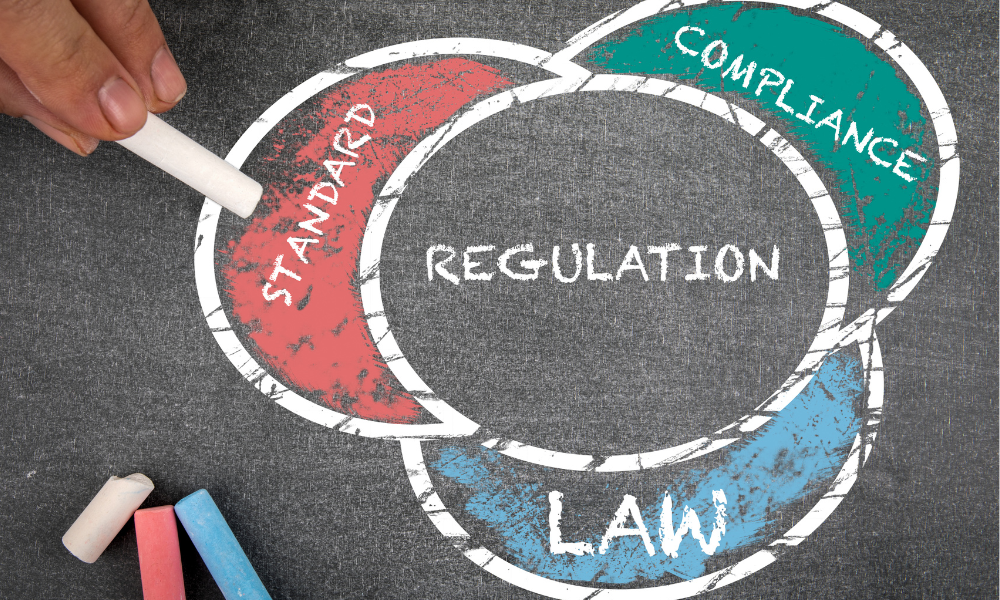Table of Contents
- Why Payroll Compliance Isn’t Just About Paying People on Time
- The Most Common Mistakes Companies Make (And What They Cost)
- The 5-Part Payroll Compliance Framework (That Actually Works)
- How Hexa Makes Global Payroll Compliance Easy (Without You Losing Sleep)
- The Biggest Payroll Risk? Thinking It Won’t Happen to You
- Want Payroll Compliance That Just Works?
You’re not reckless.
You’re not sloppy.
You pay your people on time. You file the paperwork. You even have local partners “handling things.”
So when someone brings up global payroll compliance, your reaction is probably:
“We’ve got that covered. I think.”
Until one day — you get the email.
It could be a flagged payment. A labor authority request. An employee in Vietnam who didn’t receive their statutory bonus. A contractor in the Philippines who should’ve been classified as an employee.
Or worse — a government audit in a country you’ve never stepped foot in, asking for payroll records, contribution summaries, and proof that you didn’t violate local employment law.
And suddenly, your “safe” setup? It starts looking more like a house of cards.
That’s how it happens.
Not with lawsuits and alarms. But with quiet oversights that snowball into fines, delays, reputational damage — or losing the trust of your best people.
And the worst part?
You thought you were doing everything right.
Because non-compliance doesn’t feel wrong… until it’s too late to fix.
Global payroll isn’t just about paying people. It’s about understanding the rules — in every country you hire in — and doing it in a way that’s legal, local, and defensible under audit.
Overwhelming?
It is — if you’re trying to do it alone.
But there’s a better way. And we’re going to show you what it looks like — before something breaks.
ALSO READ: Executive Overload: How Smart Leaders Scale With Delegation & Outsourcing
Why Payroll Compliance Isn’t Just About Paying People on Time

Let’s kill the biggest myth first:
“If we pay everyone correctly and on time, we’re compliant.”
Wrong.
That’s like saying you’re safe driving overseas because you stayed under the speed limit —
while ignoring the fact that you ran a red light, drove on the wrong side of the road, and forgot to signal.
Compliance isn’t about the amount.
It’s about the process. And in global payroll, the process changes country by country — often month by month.
Here’s what “compliance” actually means:
In every country you operate, you must:
- Withhold the correct taxes and social contributions
- Remit them to the right authorities, at the right time
- Pay mandatory benefits like 13th-month salaries, overtime, paid leaves, etc.
- Classify your workers correctly (contractor vs. employee vs. fixed-term hire)
- Issue payslips in the legally required format
- Keep audit-ready records for 5–7 years, depending on the jurisdiction
Do you know the rules in:
- The Philippines?
- Singapore?
- Malaysia?
- Indonesia?
Do you know how often they change?
Do your local partners tell you when they do? Or are you assuming someone else has it covered?
The silent danger of getting it wrong:
- An expat hired under the wrong visa = immigration red flag
- A missed payment to a local tax fund = fines
- An independent contractor who turns out to be an employee = backpay, penalties, lawsuits
- Wrong payslip format = automatic non-compliance in places like Indonesia
And it doesn’t matter if it was accidental.
Ignorance isn’t a defense.
In most countries, you — the employer — are legally liable. Even if someone else made the mistake.
So no, compliance isn’t just about payroll.
It’s about knowing every dotted line your money touches — and what it means when it gets there.
ALSO READ: The Impact Of Employer Of Record For Global Outsourcing In 2025
The Most Common Mistakes Companies Make (And What They Cost)

You don’t need to be careless to get payroll compliance wrong.
You just need to be busy. Or scaling fast. Or trusting someone who gave you the wrong advice.
Most mistakes aren’t dramatic. They’re quiet. They sit in the background, month after month, unnoticed — until the fine arrives, or the employee complains, or the auditor calls.
Here are the most common payroll compliance mistakes companies make across borders — and what they can cost you.
1. Misclassifying Employees as Contractors
The Mistake: You hire someone as an independent contractor to avoid local payroll obligations.
The Risk: If that contractor only works for you, follows your hours, or reports to your manager — most countries consider them an employee.
The Cost: You could owe back pay, taxes, benefits, and even severance — sometimes years retroactively.
Seen in: India, the Philippines, Vietnam, Indonesia, and more.
2. Missing Statutory Contributions
The Mistake: You forget to deduct or pay into government-mandated funds — like EPF, SSS, SOCSO, or Pag-IBIG.
The Risk: Government penalties, blocked payroll processing, or disqualification from future business tenders.
The Cost: Monthly fines, interest, and reputational damage.
Seen in: Malaysia, the Philippines, and Sri Lanka.
3. Delayed or Incorrect Payslips
The Mistake: Payslips are late, missing mandatory fields, or not issued at all.
The Risk: Violates labor law in many countries — even if salary is paid correctly.
The Cost: Automatic non-compliance, worker complaints, and exposure during audits.
Seen in: Indonesia, Bangladesh, and Vietnam.
4. Paying in the Wrong Currency or Through Unapproved Channels
The Mistake: Sending salary in USD to a contractor in the Philippines, instead of pesos via a registered local entity.
The Risk: Violates currency laws, misaligns with labor contract, or causes employee underpayment due to exchange fluctuations.
The Cost: Contract disputes, regulatory notices, and taxation errors.
Seen in: Philippines, Myanmar, and Nepal.
5. No Local Legal Entity — But Acting Like an Employer
The Mistake: You don’t have a registered entity in-country, but you:
- Set work hours
- Provide equipment
- Manage KPIs
In many cases, this makes you an “employer” under the law.
The Risk: You’re operating illegally — even if you’re paying a contractor “correctly.”
The Cost: Lawsuits, backdated taxes, forced shutdowns.
Seen in: Pretty much everywhere.
6. Relying on Local Partners Who “Figure It Out”
The Mistake: You assume your in-country vendor or partner is handling payroll legally.
The Risk: They may be cutting corners — and you’re still liable.
The Cost: You inherit their mistakes, but not their protection.
Seen in: Every market where oversight is weak.
These aren’t rare errors. They’re common, real, and fixable — if you have the right visibility and systems in place. Because it’s not just about getting paid — it’s about getting it right.
ALSO READ: How To Get A Work Visa In Malaysia In 2025 (Without Getting Buried In Bureaucracy)
What Good Global Payroll Compliance Actually Looks Like — A Simple Framework

If the last section felt overwhelming, good. That means you’re paying attention.
But let’s breathe for a second — because compliance doesn’t have to be chaos. When done right, it looks boring. Predictable. Peaceful.
That’s the goal.
So what does “getting it right” actually look like?
Let’s break it down.
The 5-Part Payroll Compliance Framework (That Actually Works)
1. Entity or Partner Alignment
You either need:
a) a registered legal entity in the country
b) a fully compliant Employer of Record (EOR) partner
Why? Because paying anyone without local authorization = risk.
What to check:
- Is your entity registered with tax and labor authorities?
- If using an EOR, are they licensed to issue payslips and sponsor contracts?
2. Worker Classification Verification
Are your people really contractors? Or employees wearing a contractor hat?
What to check:
- Do they control their own hours?
- Work for other clients?
- Provide their own equipment?
If not — they’re probably an employee, and you owe benefits, protections, and taxes.
3. Statutory Contribution Mapping
Every country has mandatory payroll deductions. You must know what they are, how much to contribute, and when to file.
Examples include:
- EPF, SOCSO, EIS (Malaysia)
- SSS, PhilHealth, Pag-IBIG (Philippines)
- Social insurance + Trade Union fees (Vietnam)
What to check:
- Are you registered with the right agencies?
- Are deductions calculated on actual gross or capped?
- Are filings monthly, quarterly, or both?
4. Payslip + Payment Compliance
Payslips aren’t optional.
Neither is paying the right currency — through the right channels — on time.
What to check:
- Are payslips delivered with the legally required breakdowns?
- Is payment made in local currency, on a registered payroll date?
- Does your process handle year-end reports like Form EA, 2316, etc.?
5. Recordkeeping + Audit Readiness
You need to document everything and store it securely for up to 7 years (depending on country).
What to check:
- Where are your records stored — and are they secure + audit-ready?
- Do you track every payroll run, statutory filing, payslip issue, and salary adjustment?
- Can you defend your compliance to local authorities?
And here’s the truth:
If you’re not sure about any of the above — you’re either already exposed or dangerously close.
But here’s the better truth:
With the right structure (or partner), you never have to think about this again.
Payroll should be boring. Compliance should be invisible.
And your time? Should be spent growing the business — not Googling “Philippines payroll penalties” at 2am.
ALSO READ: How To Get A Work Visa In The Philippines In 2025 (Without Setting Up A Local Entity)
How Hexa Makes Global Payroll Compliance Easy (Without You Losing Sleep)
Let’s be clear: You could figure all of this out on your own.
You could register legal entities in 5 countries. Study local labor law. Hire in-house payroll specialists. Navigate changing tax codes, visa requirements, and statutory reports.
But here’s a better idea:
Let someone who’s already doing it — do it for you.
At Hexa, we don’t just process payroll.
We localize it.
We’ve built systems and teams in over 8 Asian markets — not just to run payroll, but to get it right:
- Local entities, legally registered
- Payroll processed in-country, in local currency
- Payslips issued with all statutory requirements
- Contributions filed and reconciled
- Records stored securely for audits or exits
We know the difference between SOCSO and EIS. We’ve handled audits in Malaysia, resolved visa mismatches in the Philippines, and helped multinationals move from “barely compliant” to bulletproof.
We’ve even had clients come to us mid-crisis — after getting flagged by authorities for “doing payroll” through local vendors who didn’t file the right reports.
One call later, they were on track. Clean. Compliant. Covered.
Because that’s the real value:
Peace of mind.
Not just “everyone got paid.” But:
- “Every regulation was followed.”
- “Every payslip was correct.”
- “Every audit trail is clean.”
- “Every risk is covered — and we didn’t have to manage it.”
That’s what Hexa does. Quietly. Legally. Relentlessly.
We make payroll compliance boring again — the way it should be.
ALSO READ: GUIDE: The Role of an Employer of Record and Everything You Should Know About
The Biggest Payroll Risk? Thinking It Won’t Happen to You
Most companies don’t ignore payroll compliance.
They just… assume it’s handled.
That’s the real danger.
Because the biggest payroll risk isn’t doing something wrong.
It’s not realizing something’s wrong — until it’s too late to fix it.
You won’t see the warning signs in your inbox. They show up as:
- A resignation from a frustrated overseas employee
- A government letter you need translated
- A lost opportunity because your records didn’t meet audit standards
It’s not dramatic — it’s draining. And the cost? It’s always more than just money.
But that doesn’t have to be your story.
Payroll compliance isn’t about complexity. It’s about clarity.
And clarity comes from working with people who live this every day — people who know what the rules are before they change.
If this article made you pause — that’s a good thing. That’s how smart decisions begin.
You don’t need a legal department. You need a partner who already knows the landscape.
And when you’re ready — we’re here.
Quietly. Confidently. Compliantly.
Want Payroll Compliance That Just Works?
Hexa helps global companies build, pay, and protect their teams — with local expertise, end-to-end compliance, and none of the stress. Speak to us.






